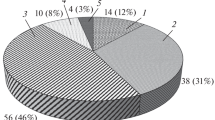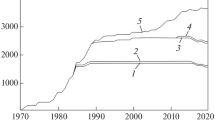Abstract
The desire to utilize waste heat from various industrial and technological processes leads to the search for new technical solutions and the development of technologies aimed at converting the thermal energy of low-grade heat carriers into electrical energy. Today, one of the most widespread technologies for generating electricity based on the use of low-grade heat is the organic Rankine cycle, which is implemented in binary cycle (ORC) power plants. The increased interest in these technologies is explained by the fact that significant initial capital costs for the creation of binary plants and their relatively low economic performance are in most cases offset by low operating costs for fuel. The use of multistage ORCs can become one of the ways to increase the efficiency of waste heat utilization. Specific examples and promising possibilities for the practical use of modular-staged ORCs in order to utilize the heat of waste heat carriers of various industries are presented. The features of multistage schemes are studied, the operation of which is based on the principle of incremental (step-by-step) energy conversion of a high-temperature geothermal single-phase water heat carrier in ORCs to increase the efficiency of using geothermal resources. Some results of computational studies of thermodynamic indicators and technical characteristics of two- and three-stage ORCs with a high-temperature (180°C) initial geothermal fluid are considered. The analysis of the technical characteristics of two- and three-stage ORCs is carried out in comparison with the traditional single-circuit ORC power unit when using various organic substances as a working fluid. It is shown that the use of a two-stage scheme makes it possible to increase the amount of heat transferred to a binary cycle by 15% in comparison with a single-stage scheme, and the use of a three-stage scheme by 18.9%. When implementing the developed methodology for numerical modeling of geothermal and binary circuits, it is possible to optimize the technological schemes of two- and three-stage ORCs according to the maximum installed power and minimum mass flowrate of the initial geothermal fluid.








Similar content being viewed by others
REFERENCES
M. T. White, M. G. Read, and A. I. Sayma, “Making the case for cascaded organic Rankine cycles for waste-heat recovery,” Energy 211, 118912 (2020). https://doi.org/10.1016/j.energy.2020.118912
M. Kanoglu, “Exergy analysis of a dual-level binary geothermal power plant,” Geothermics 31, 709–724 (2020). https://doi.org/10.1016/S0375-6505(02)00032-9
Z. Gnutek and A. Bryszewska-Mazurek, “The thermodynamic analysis of multicycle ORC engine,” Energy 26, 1075–1082 (2001). https://doi.org/10.1016/S0360-5442(01)00070-6
F. Heberle, T. Jahrfeld, and D. Brüggemann, “Thermodynamic analysis of double-stage organic Rankine cycles for low-enthalpy sources based on a case study for 5.5 MWe power plant Kirchstockach (Germany),” in Proc. World Geothermal Congr., Melbourne, Australia, Apr. 19–25, 2015 (International Geothermal Association, Melbourne, 2015). https://www.geothermal-energy.org
M. Kane, D. Larrain, D. Favrat, and Y. Allani, “Small hybrid solar power system,” Energy 28, 1427–1443 (2003). https://doi.org/10.1016/S0360-5442(03)00127-0
G. V. Tomarov, A. I. Nikol’skii, V. N. Semenov, and A. A. Shipkov, Geothermal Energy: Reference and Methodical Publication (Intekhenergo-Izdat/Teploenergetik, Moscow, 2015) [in Russian].
G. V. Tomarov and A. A. Shipkov, “A combined binary-cycle geothermal power plant with a secondary flash steam superheating system: Choice of optimal working fluids,” Therm. Eng. 66, 822–829 (2019). https://doi.org/10.1134/S0040601519110065
Y. G. Yohanis, O. S. Popel, and S. E. Frid, “A simplified method of calculating heat flow through a two-phase heat exchanger,” Appl. Therm. Eng. 25, 2321–2329 (2005). https://doi.org/10.1016/j.applthermaleng.2004.12.011
Author information
Authors and Affiliations
Corresponding authors
Rights and permissions
About this article
Cite this article
Tomarov, G.V., Shipkov, A.A. Multistage Geothermal ORC Power Units: Utilization of High Temperature (180°C) Geothermal Fluid. Therm. Eng. 69, 259–266 (2022). https://doi.org/10.1134/S0040601522030107
Received:
Revised:
Accepted:
Published:
Issue Date:
DOI: https://doi.org/10.1134/S0040601522030107




